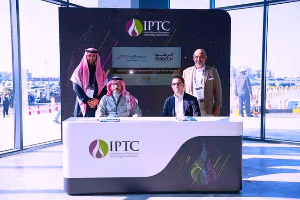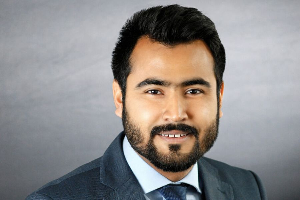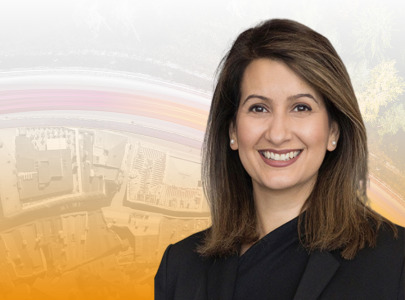Prospects for the Gulf’s water sector in 2020

2019 was a stellar year for the GCC water sector – will 2020 be another one?
Bob Bryniak
There is no doubt about it that 2019 was a stellar year for the water industry throughout the GCC. Led by a surge of activity in Saudi Arabia, both engineering, procurement and construction (EPC) contractors and developers were kept busy chasing a number of independent water producer (IWP) and sewage treatment projects (ISTP), as well as design build operate (DBO) and EPC contracts throughout the Region.
Tendered and Awarded Projects in 2019
|
Country |
Project |
Client |
Structure |
Capacity – m3/d |
|
Saudi Arabia |
Yanbu 4 |
SWPC |
IWP |
450,000 |
|
Jubail 3a |
SWPC |
IWP |
600,000 |
|
|
Taif |
SWPC |
ISTP |
100,000 |
|
|
Jubail 3b |
SWPC |
IWP |
570,000 |
|
|
Floating Desal Stations |
SWCC |
EPC |
150,000 |
|
|
Shuaiba 5 |
SWCC |
EPC |
600,000 |
|
|
Shuqaiq 4 |
SWCC |
EPC |
400,000 |
|
|
Tanajib |
Aramco |
EPC |
24,000 |
|
|
Qatar |
Facility D Expansion |
Kahramaa |
IWPP |
280,000 |
|
Wakra & Al Wukair |
Ashghal |
ISTP |
150,000 |
|
|
Facility E |
Kahramaa |
IWPP |
455,000 |
|
|
Bahrain |
SouthWest |
TBA |
STP |
TBA |
|
UAE |
Umm Al Quwain |
FEWA |
IWP |
682,000 |
|
Taweelah |
EWEC |
IWP |
909,000 |
|
|
Hassyan |
DEWA |
IWP |
545,000 |
|
|
Kuwait |
NA |
|||
|
Oman |
Ghubrah 3 |
OPWP |
IWP |
300,000 |
|
Wadi Dayqah |
OPWP |
IWP |
125,000 |
|
|
Barka 5 IWP |
OPWP |
IWP |
100,000 |
|
|
Total Desalination Water Capacity (m3/d): |
6,190,000 |
|||
Note: EWEC – Emirates Water and Electricity Authority
DEWA – Dubai Electricity and Water Authority
FEWA – Federal Electricity and Water Authority
OPWP – Oman Power and Water Procurement Company
SWPC – Saudi Water Partnership Company, formally the Water and Electricity Company
SWCC – Saline Water Conversion Company
TBA - to be announced
NA - None Available
A total of nearly 6.2 million cubic metres a day (m3/d) of desalinated water capacity was either tendered or awarded in 2019. This compares to only 250,000 m3/d for sewage treatment plants. Most projects are structured as public-private partnerships (PPP), either as build-own- operate (BOO) or build-own-operate-transfer (BOOT). Water desalination plants tend to be structured as BOO while sewage treatment plants are BOOT. This trend is expected to continue throughout 2020, though there are likely to be a few EPC and DBO type projects to be announced as well.
Saudi Arabia issued tenders or awarded nearly half of these plants for a total capacity of about 2.9 million m3/d. This is equivalent to nearly double Oman’s entire roster of seawater desalination plants. The massive pipeline of desalination plants is intended to not only meet the growing demand for potable water in the kingdom, but also to permanently replace ground sources of water supply which have been severely depleted over the years, and to offset the water supply from older plants being decommissioned.
Very little action took place in Kuwait, though a number of new projects are planned for 2020 and beyond. Whether these will materialise or not remains to be seen, as the country stalled progress on the PPP front in 2019 with the cancellation of advisory services for Al Zour North 2 & 3 and Al-Khiran IWPPs in October. The country’s commitment to these projects is questionable. It was also fairly quiet in Bahrain, though there are plans for a new ISTP in the Southwest area, though plant capacity and overall structure have yet to be confirmed.
Oman had a few IWPs tendered in 2019 and issued an Expression of Interest for Wadi Dayqah, a surface water treatment plant, though tender documents have yet to be issued. These are expected in early 2020. Qatar was also active with 2 desalination plants as part of larger IWPPs, along with an ISTP. Dubai finally entered the PPP foray with Hassyan, its first attempt at an IWP. The contractual structure of the 545,000 m3/d desalination plant mirrors the Abu Dhabi PPP model, with DEWA taking a 60 per cent ownership of the project. And after much consternation and deliberation, the Taweelah IWP finally reached financial close.
What’s in store for 2020?
Another active year is expected with Saudi Arabia continuing to lead the charge, as it launches new plants in both water and waste water. Although new plants are also planned for Oman, Bahrain and Kuwait, their numbers dwindle in comparison to what is planned for Saudi Arabia. In addition to somewhat smaller capacity plants being tendered by the mega projects such as NEOM and the Red Sea Development, expect Saudi Water Partnership Company (SWPC) to announce new PPP initiatives for major water transmission pipelines, strategic reservoirs and smaller ISTPs throughout the Kingdom. At least 11 new water desalination projects are planned by SWPC, along with another 11 major sewage treatment plants. At least another 150 small STPs are also planned across the Kingdom over the next few years. Add another 10+ strategic reservoirs and at least 8 water transmission pipelines to the mix, and we have a massive pipeline of projects planned in Saudi Arabia.
One of the challenges facing SWPC, and other procurers throughout the region, is whether the private sector can absorb the flood of new projects over the next 5 years, especially those structured as PPPs where access to project financing is critical in achieving success. On the positive side, interest rates remain low and there appears to be sufficient liquidity in the market to finance these projects. Financial markets witnessed 3 interest rate cuts by the US Federal Reserve last year, the first time interest rates were lowered since the financial crisis back in 2008, and, if Trump has his way, rates are likely to remain low for some time. This bodes well for developers seeking financing at attractive rates.
Manufacturers and suppliers also appear to have sufficient spare capacity to meet major equipment and consumable demands, including the supply of membranes and chemicals. However, the challenge, for developers and particularly major EPC contractors, will be whether they can take on these projects without facing serious cost increases. As more and more projects enter the construction phase, there is likely to be greater pressure for both specialised labour and material prices to rise.
There is also evidence to suggest that developers are now fine tuning their bids and targeting which projects to go after. Back in 2018, it was not unusual to see 5-to-8 bids submitted per project. In other words, there were 4 or 7 losers for each project – which all would have spent serious sums of money on working on a proposal – especially for projects with large capacities and other unique features such as early water requirements or fast track delivery schedules. More recent projects in both Saudi Arabia and Oman are experiencing fewer bidders. For instance, there were only 2 bidders for Barka 5 IWP (GS Inima and Veolia) in Oman and 4 bidders for Taif ISTP in Saudi Arabia, even though a much higher number of developers had been qualified to bid.
It is too early to tell whether this will result in cost pressures and higher tariffs, though 2019 saw records being shattered with each new IWP and ISTP, especially in Saudi Arabia and UAE. There is still room to improve energy efficiency in water project, and with interest rates at low levels, we could still see lower tariffs submitted in 2020, especially when procurers allow developers to include renewables as part of their bids. As a result, we can expect to see lower tariffs at the start of 2020, but don’t be surprised to see them starting to edge up as the year closes.
Energy & Utilities - Middle East and Africa Market Outlook Report 2024.
This must-have report for industry players offers a thorough understanding of the latest developments, challenges, and opportunities in the region, supported by data, analysis, and expert insights.








